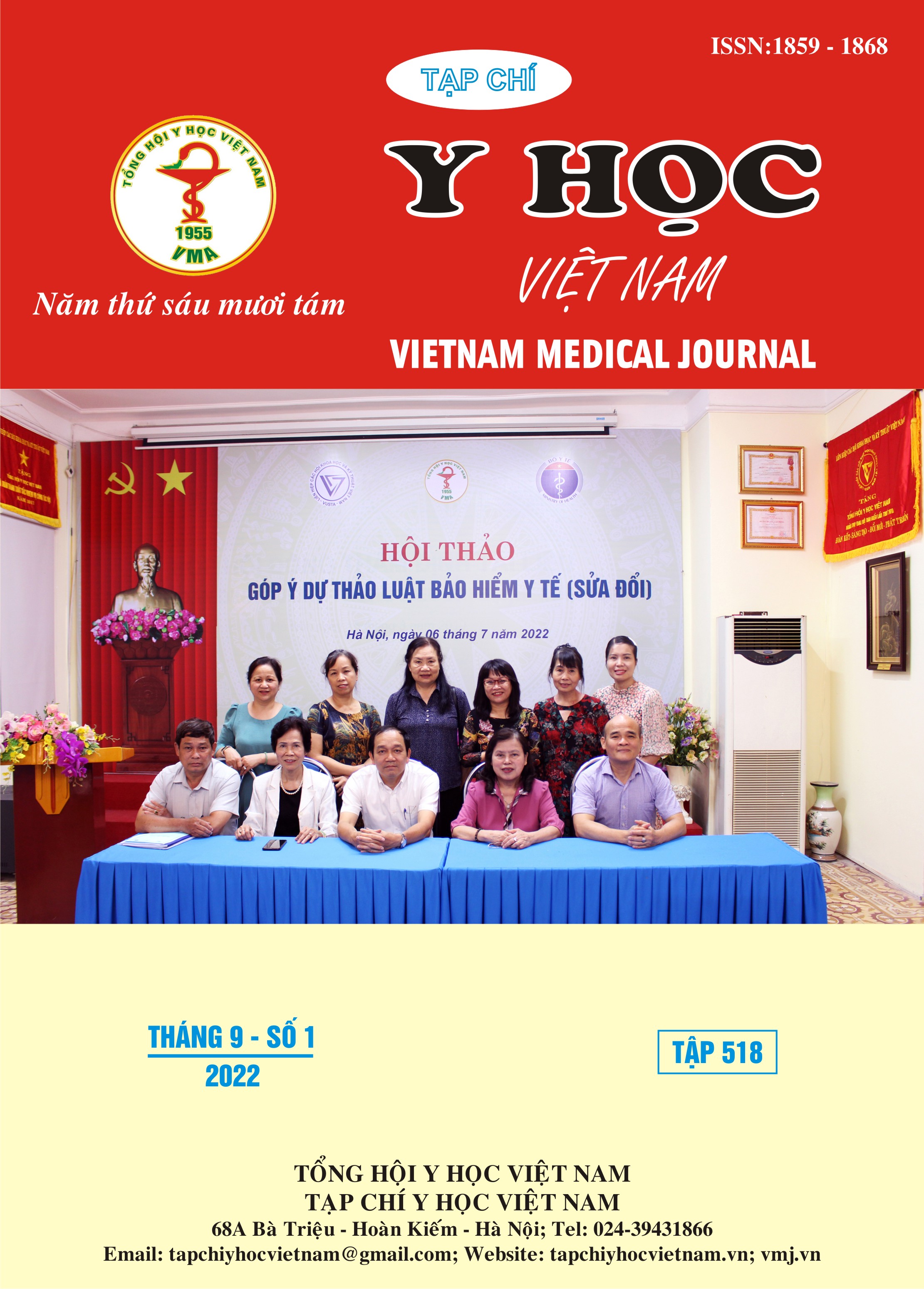THE EFFECTIVENESS OF ULTRASOUND-GUIDED SELECTIVE CERVICAL NERVE ROOT C5- C7 BLOCK
Main Article Content
Abstract
Objective: The objective of this study was to evaluate the effectiveness of Ultrasound-guided selective cervical nerve root block (SCNRB). Method: From July 2021 to July 2022, a prospective study of 34 patients received ultrasound (US)-guided SCNRB for cervical radicular pain C5-C7 in Millitary Hospital 108. Patients are evaluated the complication after injection, the effect of procedure by the pain relief with Visual analogue scales (VAS) and the improvement of function of neck with Neck Disability Index (NDI) at preinjection and 10 minutes, 2 weeks, 1 month and 3 month postinjection. Results: Our study on the US-guided SCNRB of 34 patients with 20 male and 14 female, the mean of age is 53,59 ± 8,67. There is statistically significant difference in the mean value of the decrease of visual analogue scales (VAS) from 8 ± 0,85 preinjection to the postinjection at 10 minutes, 2 weeks, 1 month and 3 months 2,03 ± 1,87; 2,59 ±1,69; 1,79 ± 1,72 and 1,29 ± 1,29 respectively (P< 0.001 compared to before injection). There is statistically significant difference in the mean value of the improvement of NDI from 24,91 ± 7,64 preinjection to the postinjection at 1 month and 3 months 6,29 ± 5,87 và 4,35 ± 4,14 respectively (P< 0.001 compared to before injection). The successful rate of procedure with the decrease of VAS more than 50% and the decrease of NDI more than 40% at postinjection 1 month and 3 month are 91,2% and 97,1% respectively. After injection, there are 5 patients with mild complication (14,7%), with 3 cases with dizziness, 1 case with dizziness and nausea and 1 case with transient sympathetic blockade. No serious complication. Conclusions: We suggest that ultrasound-guided SCNRB is an effective, safe, simple procedure and free of radiation and provides sustained pain relief in patients with cervical radiculopathy.
Article Details
Keywords
Cervical radiculopathy, ultrasound-guided, selective cervical nerve root block
References
2. Narouze SN. Ultrasound-guided cervical spine injections: ultrasound “prevents” whereas contrast fluoroscopy “detects” intravascular injections. Regional Anesthesia & Pain Medicine. 2012; 37(2):127-130.
3. Takeuchi M, Kamiya M, Wakao N, et al. A simple, 10-minute procedure for transforaminal injection under ultrasonic guidance to effect cervical selective nerve root block. Neurologia medico-chirurgica. 2014:oa. 2013-0332.
4. Pobiel RS, Schellhas KP, Eklund JA, et al. Selective cervical nerve root blockade: prospective study of immediate and longer term complications. AJNR American journal of neuroradiology. Mar 2009;30(3):507-11. doi:10.3174/ajnr.A1415
5. Kang S, Yang SN, Kim SH, Byun CW, Yoon JS. Ultrasound-guided cervical nerve root block: does volume affect the spreading pattern? Pain Medicine. 2016;17(11):1978-1984.
6. Zhang X, Shi H, Zhou J, et al. The effectiveness of ultrasound-guided cervical transforaminal epidural steroid injections in cervical radiculopathy: a prospective pilot study. Journal of pain research. 2019;12:171-177. doi:10.2147/jpr.s181915
7. Park Y, Ahn JK, Sohn Y, et al. Treatment Effects of Ultrasound Guide Selective Nerve Root Block for Lower Cervical Radicular Pain: A Retrospective Study of 1-Year Follow-up. Annals of rehabilitation medicine. Oct 2013;37(5):658-67. doi:10.5535/arm.2013.37.5.658
8. Scanlon GC, Moeller-Bertram T, Romanowsky SM, Wallace MS. Cervical transforaminal epidural steroid injections: more dangerous than we think? Spine. 2007;32(11):1249-1256.
9. Jee H, Lee JH, Kim J, Park KD, Lee WY, Park Y. Ultrasound-guided selective nerve root block versus fluoroscopy-guided transforaminal block for the treatment of radicular pain in the lower cervical spine: a randomized, blinded, controlled study. Skeletal radiology. 2013;42(1):69-78.


